How to Lengthen the Long-Term Stability of Enzyme Membranes: Trends and Strategies
Abstract
:1. Introduction
2. Element One: Immobilized Enzymes
2.1. Strategy for Enhancing Heat Stability
2.2. Stability against Organic Media
2.3. Stability by Immobilization
3. Supporting Materials
3.1. Prevention of Fouling by Supporting Materials
3.2. Chemically-Stable Material for the Matrix
4. Conclusions
Conflicts of Interest
References
- Guisan, J.M. Immobilization of enzymes as the 21st century begins. In Immobilization of Enzymes and Cells, 2nd ed.; Guisan, J.M., Ed.; Humana Press: New York, NY, USA, 2006; pp. 1–13. [Google Scholar]
- Tsujimura, S.; Nishina, A.; Hamano, Y.; Kano, K.; Shiraishi, S. Electrochemical reaction of fructose dehydrogenase on carbon cryogel electrodes with controlled pore sizes. Electrochem. Commun. 2010, 12, 446–449. [Google Scholar] [CrossRef]
- Merle, G.; Habrioux, A.; Servat, K.; Rolland, M.; Innocent, C.; Kokoh, K.B.; Tingry, S. Long-term activity of covalent grafted biocatalysts during intermittent use of a glucose/O2 biofuel cell. Electrochim. Acta 2009, 54, 2998–3003. [Google Scholar] [CrossRef]
- Grimaldi, J.; Collins, C.H.; Belfort, G. Toward cell-free biofuel production: Stable immobilization of oligomeric enzymes. Biotechnol. Prog. 2014, 30, 324–331. [Google Scholar] [CrossRef] [PubMed]
- De Poulpiquet, A.; Ciaccafava, A.; Lojou, E. New trends in enzyme immobilization at nanostructured interfaces for efficient electrocatalysis in biofuel cells. Electrochim. Acta 2014, 126, 104–114. [Google Scholar] [CrossRef]
- Hyun, K.H.; Han, S.W.; Koh, W.-G.; Kwon, Y. Fabrication of biofuel cell containing enzyme catalyst immobilized by layer-by-layer method. J. Power Source 2015, 286, 197–203. [Google Scholar] [CrossRef]
- Sitanggang, A.B.; Drews, A.; Kraume, M. Influences of operating conditions on continuous lactose synthesis in an enzymatic membrane reactor system: A basis prior to long-term operation. J. Biotechnol. 2015, 203, 89–96. [Google Scholar] [CrossRef] [PubMed]
- Bosio, V.E.; Islan, G.A.; Martínez, Y.N.; Durán, N.; Castro, G.R. Nanodevices for the immobilization of therapeutic enzymes. Crit. Rev. Biotechnol. 2016, 36, 447–464. [Google Scholar] [CrossRef] [PubMed]
- Sakamoto, H.; Uchii, T.; Yamaguchi, K.; Koto, A.; Takamura, E.; Satomura, T.; Sakuraba, H.; Ohsima, T.; Suye, S. Construction of a biocathode using the multicopper oxidase from the hyperthermophilic archaeon, Pyrobaculum aerophilum: Towards a long-life biobattery. Biotechnol. Lett. 2015, 37, 1399–1404. [Google Scholar] [CrossRef] [PubMed]
- Yabuki, S. Supporting materials that improve the stability of enzyme membranes. Anal. Sci. 2014, 30, 213–217. [Google Scholar] [CrossRef] [PubMed]
- Rueda, N.; dos Santos, J.C.S.; Ortiz, C.; Torres, R.; Barbosa, O.; Rodrigues, R.C.; Berenguer-Murcia, Á.; Fernandez-Lafuente, R. Chemical modification in the design of immobilized enzyme biocatalysts: Drawbacks and opportunities. Chem. Rec. 2016, 16, 1436–1455. [Google Scholar] [CrossRef] [PubMed]
- Cowan, D.A.; Fernandez-Lafuente, R. Enhancing the functional properties of thermophilic enzymes by chemical modification and immobilization. Enzym. Microb. Technol. 2011, 49, 326–346. [Google Scholar] [CrossRef] [PubMed]
- Geronimo, I.; Denning, C.A.; Rogers, W.E.; Othman, T.; Huxford, T.; Heidary, D.K.; Glazer, E.C.; Payne, C.M. Effect of mutation and substrate binding on the stability of Cytochrome P450BM3 variants. Biochemistry 2016, 55, 3594–3606. [Google Scholar] [CrossRef] [PubMed]
- Xia, W.; Xu, X.; Qian, L.; Shi, P.; Bai, Y.; Luo, H.; Ma, R.; Yao, B. Engineering a highly active thermophilic β-glucosidase to enhance its pH stability and saccharification performance. Biotechnol. Biofuels 2016, 9, 147. [Google Scholar] [CrossRef] [PubMed]
- Moraïs, S.; Stern, J.; Kahn, A.; Galanopoulou, A.P.; Yoav, S.; Shamshoum, M.; Smith, M.A.; Hatzinikolaou, D.G.; Arnold, F.H.; Bayer, E.A. Enhancement of cellulosome-mediated deconstruction of cellulose by improving enzyme thermostability. Biotechnol. Biofuels 2016, 9, 164. [Google Scholar] [CrossRef] [PubMed]
- Lopes, J.L.S.; Yoneda, J.S.; Martins, J.M.; DeMarco, R.; Jameson, D.M.; Castro, A.M.; Bossolan, N.R.S.; Wallace, B.A.; Araujo, A.P.U. Environmental factors modulating the stability and enzymatic activity of the Petrotoga mobilis esterase (PmEst). PLoS ONE 2016, 11, e0158146. [Google Scholar] [CrossRef] [PubMed]
- Drobecq, H.; Boll, E.; Sénéchal, M.; Desmet, R.; Saliou, J.-M.; Lacapère, J.-J.; Mougel, A.; Vicogne, J.; Melnyk, O. A central cysteine residue is essential for the thermal stability and function of SUMO-1 protein and SUMO-1 peptide-protein conjugates. Bioconjug. Chem. 2016, 27, 1540–1546. [Google Scholar] [CrossRef] [PubMed]
- Liu, T.; Wang, Y.; Luo, X.; Li, J.; Reed, S.A.; Xiao, H.; Young, T.S.; Schltz, P.G. Enhancing protein stability with extended disulfide bonds. Proc. Natl. Acad. Sci. USA 2016, 113, 5910–5915. [Google Scholar] [CrossRef] [PubMed]
- Moradpour, Z.; Ghasemian, A. Protein engineering of microbial cholesterol oxidases: A molecular approach toward development of new enzymes with new properties. Appl. Microbiol. Biotechnol. 2016, 100, 4323–4336. [Google Scholar] [CrossRef] [PubMed]
- Rathi, P.C.; Fulton, A.; Jaeger, K.E.; Gohlke, H. Application of rigidity to the thermostabilization of lipase A from Bacillus subtilis. PLoS ONE 2016, 12, e1004754. [Google Scholar] [CrossRef] [PubMed]
- Diao, H.; Zhang, C.; Wang, S.; Lu, F.; Lu, Z. Enhanced thermostability of lipoxygenase from Anabaena sp. PCC 7120 by site-directed mutagenesis based on computer-aided rational design. Appl. Biochem. Biotechnol. 2016, 178, 1339–1350. [Google Scholar] [CrossRef] [PubMed]
- Guo, B.; Amano, Y.; Nozaki, K. Improvements in glucose sensitivity and stability of Trichoderma reesei β-glucosidase using site-directed mutagenesis. PLoS ONE 2016, 74, 74–80. [Google Scholar] [CrossRef] [PubMed]
- Then, J.; Wei, R.; Oeser, T.; Gerdts, A.; Schmidt, J.; Barth, M.; Zimmermann, W. A disulfide bridge in the calcium binding site of a polyester hydrolase increases its thermal stability and activity against polyethylene terephthalate. FEBS Open Biol. 2016, 6, 425–432. [Google Scholar] [CrossRef] [PubMed]
- Bornscheuer, U.T.; Huisman, G.W.; Kazlauskas, R.J.; Lutz, S.; Moore, J.C.; Robins, K. Engineering the third wave of biocatalysis. Nature 2012, 485, 185–194. [Google Scholar] [CrossRef] [PubMed]
- Zeiske, T.; Stafford, K.A.; Palmer, A.G., III. Thermostability of enzymes from molecular dynamics simulations. J. Chem. Theory Comput. 2016, 12, 2489–2492. [Google Scholar] [CrossRef] [PubMed]
- Tompa, D.R.; Gomiha, M.M.; Saraboji, K. Contribution of main chain and side chain atoms and their locations to the stability of thermophilic proteins. J. Mol. Graph. Model. 2016, 64, 85–93. [Google Scholar] [CrossRef] [PubMed]
- Siddiqui, K.S.; Cavicchioli, R. Improved thermal stability and activity in the cold-adapted lipase B from Candida antarctica following chemical modification with oxidized polysaccharides. Extremophiles 2005, 9, 471–476. [Google Scholar] [CrossRef] [PubMed]
- Pešić, M.; Božic, N.; López, C.; Lončar, N.; Álvaro, G.; Vujčić, Z. Chemical modification of chloroperoxidase for enhanced stability and activity. Proc. Biochem. 2014, 49, 1472–1479. [Google Scholar] [CrossRef]
- Mizutani, F.; Yabuki, S.; Okuda, A.; Katsura, T. Glucose-sensing electrode based on carbon paste containing ferrocene and polyethylene glycol-modified enzyme. Bull. Chem. Soc. Jpn. 1991, 64, 2849–2851. [Google Scholar] [CrossRef]
- Yabuki, S.; Mizutani, F.; Katsura, T. Glucose sensing carbon paste electrode containing polyethylene glycol-modified glucose oxidase. Biosens. Bioelectron. 1992, 7, 695–700. [Google Scholar] [CrossRef]
- Yabuki, S.; Mizutani, F.; Katsura, T. Electrical communication of polyethylene glycol-modified glucose oxidase in carbon paste and its application to the assay of glucose. Sens. Actuators 1993, 13, 166–168. [Google Scholar] [CrossRef]
- Yabuki, S.; Mizutani, F.; Katsura, T. Choline sensing electrode based on polyethylene glycol-modified enzyme and mediator. Sens. Actuators 1994, 20, 159–162. [Google Scholar] [CrossRef]
- Mizutani, F.; Yabuki, S.; Iijima, S. Amperometric Glucose-sensing electrode based on carbon paste containing polyethylene glycol-modified glucose oxidase and cobalt octaethoxyphthalocyanine. Anal. Chim. Acta 1995, 300, 59–64. [Google Scholar] [CrossRef]
- Saby, C.; Mizutani, F.; Yabuki, S. Glucose sensor based on carbon paste electrode incorporating poly(ethylene glycol)-modified glucose oxidase and various mediators. Anal. Chim. Acta 1995, 304, 33–39. [Google Scholar] [CrossRef]
- Yabuki, S.; Mizutani, F. Modifications to a carbon paste glucose sensing enzyme electrode and a reduction in the electrochemical interference from l-ascorbate. Biosens. Bioelectron. 1995, 10, 353–358. [Google Scholar] [CrossRef]
- Cipolatti, E.P.; Valério, A.; Ninow, J.L.; de Oliveira, D.; Pessela, B.C. Stabilization of lipase from Thermomyces lanuginosus by crosslinking in PEGylated polyuretane particles by polymerization: Application of fish oil ethanolysis. Biochem. Eng. J. 2016, 112, 54–60. [Google Scholar] [CrossRef]
- Pazhang, M.; Mehrnejad, F.; Pazhang, Y.; Falahati, H.; Chaparzadeh, N. Effect of sorbitol and glycerol on the stability of trypsin and difference between their stabilization effects in the various solvents. Biotechnol. Appl. Biochem. 2016, 63, 206–213. [Google Scholar] [CrossRef] [PubMed]
- Wang, S.; Meng, X.; Zhou, H.; Liu, Y.; Secundo, F.; Liu, Y. Enzyme stability and activity in non-aqueous reaction systems: A mini review. Catalysts 2016, 6, 32. [Google Scholar] [CrossRef]
- Chefson, A.; Auclair, K. CYP3A4 activity in the presence of organic cosolvents, ionic liquids, or water-immiscible organic solvents. ChemBioChem 2007, 8, 1189–1197. [Google Scholar] [CrossRef] [PubMed]
- Llerena-Suster, C.R.; José, C.; Collins, S.E.; Briand, L.E.; Morcelle, S.R. Investigation of the structure and proteolytic activity of papain in aqueous miscible organic media. Proc. Biochem. 2012, 47, 47–56. [Google Scholar] [CrossRef]
- Secundo, F.; Fialà, S.; Fraaije, M.W.; de Gonzalo, G.; Meli, M.; Zambianchi, F.; Ottolina, G. Effects of water miscible organic solvents on the activity and conformation of the Baeyer-Villiger monooxygenases from Thermobifida fusca and Acinetobacter calcoaceticus: A comparative study. Biotechnol. Bioeng. 2011, 108, 491–499. [Google Scholar] [CrossRef] [PubMed]
- Grassino, A.N.; Milardović, S.; Grabarić, Z.; Grabarić, B.S. Amperometric assessment of glucose electrode behaviour in mixed solvents and determination of glucose in dairy products. Food Chem. 2011, 125, 1335–1339. [Google Scholar] [CrossRef]
- Xiong, H.Y.; Chen, T.; Zhang, X.H.; Wang, S.F. Electrochemical property and analysis application of biosensors in miscible nonaqueous media—Room-temperature ionic liquid. Electrochem. Commun. 2007, 9, 1648–1654. [Google Scholar] [CrossRef]
- Bekhouche, M.; Blum, L.J.; Doumèche, B. Ionic liquid-inspired cations covalently bound to formate dehydrogenase improve its stability and activity in ionic liquids. ChemCatChem 2011, 3, 875–882. [Google Scholar] [CrossRef]
- Roes-Hill, M.L.; Palmer, Z.; Rohland, J.; Kirby, B.M.; Burton, S.G. Partial purification and characterisation of two actinomycete tyrosinases and their application in cross-linking reactions. J. Mol. Catal. B 2015, 122, 353–364. [Google Scholar] [CrossRef]
- Carter, J.L.L.; Bekhouche, M.; Noiriel, A.; Blum, L.J. Directed evolution of a formate dehydrogenase for increased tolerance to ionic liquids reveals a new site for increasing the stability. ChemBioChem 2014, 15, 2710–2718. [Google Scholar] [CrossRef] [PubMed]
- Xiaoyan, Z.; Yuanyuan, J.; Zaijun, L.; Zhiguo, G.; Guangli, W. Improved activity and thermo-stability of the horseradish peroxidase with graphene quantum dots and its application in fluorometric detection of hydrogen peroxide. Spectrochim. Acta Part A 2016, 165, 106–113. [Google Scholar] [CrossRef] [PubMed]
- Mohamad, N.R.; Marzuki, N.H.C.; Buang, N.A.; Huyop, F.; Wahab, R.A. An overview of technologies for immobilization of enzymes and surface analysis techniques for immobilized enzymes. Biotechnol. Biotechnol. Equip. 2015, 29, 205–220. [Google Scholar] [CrossRef] [PubMed]
- Yabuki, S.; Shinohara, H.; Aizawa, M. Electro-conductive enzyme membrane. J. Chem. Soc. Chem. Commun. 1989, 945–946. [Google Scholar] [CrossRef]
- Fujita, S.; Yamanoi, S.; Murata, K.; Mita, H.; Samukawa, T.; Nakagawa, T.; Sakai, H.; Takita, Y. A repeately refuelable mediated biofuel cell based on a hierarchical porous carbon electrode. Sci. Rep. 2014, 4, 4937. [Google Scholar] [CrossRef] [PubMed]
- De Albuquerque, T.L.; Peirce, S.; Rueda, N.; Marzocchella, A.; Gonçalves, L.R.B.; Valderez, M.; Rocha, P.; Fernandez-Lafuente, R. Ion exchange of β-galactosidase: The effect of the immobilization pH on enzyme stability. Process Biochem. 2016, 51, 875–880. [Google Scholar] [CrossRef]
- Jaiswal, N.; Pandey, V.P.; Dwivedi, U.N. Immobilization of papaya laccase in chitosan led to improved multipronged stability and dye discoloration. Int. J. Biol. Macromol. 2016, 86, 288–295. [Google Scholar] [CrossRef] [PubMed]
- Srivastava, N.; Srivastava, M.; Mishra, P.K.; Ramteke, P.W. Application of ZnO nanoparticles for improving the thermal and pH stability of crude cellulase obtained from Aspergillus fumigatus AA001. Front. Microbiol. 2016, 7, 514. [Google Scholar] [CrossRef] [PubMed]
- Padilla-Martínez, S.; Martínez-Jothar, L.; Sampedro, J.G.; Tristan, F.; Pérez, E. Enhanced thermal stability and pH behavior of glucose oxidase on electrostatic interaction with polyethylenimine. Int. J. Biol. Macromol. 2015, 75, 453–459. [Google Scholar] [CrossRef] [PubMed]
- Lai, E.; Wang, Y.; Wei, Y.; Li, G.; Ma, G. Covalent immobilization of trypsin onto thermo-sensitive poly(N-isopropylacrylamide-co-acrylic acid) microspheres with high activity and stability. J. Appl. Polym. Sci. 2016, 133, 43343. [Google Scholar] [CrossRef]
- Srbová, J.; Slováková, M.; Křípalová, Z.; Žárská, M.; Špačková, M.; Stránská, D.; Bílková, Z. Covalent biofunctionalization of chitosan nanofibers with trypsin for high enzyme stability. React. Funct. Polym. 2016, 104, 38–44. [Google Scholar] [CrossRef]
- Yoshimoto, M.; Yamada, J.; Baba, M.; Walde, P. Enhanced heat stability of α-chymotrypsin through single-enzyme confinement in attoliter liposomes. ChemBioChem 2016, 17, 1221–1224. [Google Scholar] [CrossRef] [PubMed]
- Ogorzalek, T.L.; Wei, S.; Liu, Y.; Wang, Q.; Brooks, C.L., III; Chen, Z.; Marsh, E.N.G. Molecular-level insights into orientation-dependent changes in the thermal stability of enzymes covalently immobilized on surfaces. Langmuir 2015, 31, 6145–6153. [Google Scholar] [CrossRef] [PubMed]
- Liang, H.; Jiang, S.; Yuan, Q.; Li, G.; Wang, F.; Zhang, Z.; Liu, J. Co-immobilization of multiple enzymes by metal coordinated nucleotide hydrogel nanofibers: Improved stability and an enzyme cascade for glucose detection. Nanoscale 2016, 8, 6071–6078. [Google Scholar] [CrossRef] [PubMed]
- Ispirli Doğaç, Y.; Teke, M. Synthesis and characterization of biocompatible polymer-conjugated magnetic beads for enhancement stability of urease. Appl. Biochem. Biotechnol. 2016, 179, 94–110. [Google Scholar] [CrossRef] [PubMed]
- Biró, E.; Budugan, D.; Todea, A.; Péter, F.; Klébert, S.; Feczkó, T. Recyclable solid-phase biocatalyst with improved stability by sol-gel entrapment of β-d-galatosidase. J. Mol. Catal. B 2016, 123, 81–90. [Google Scholar] [CrossRef]
- Des Santos, J.C.S.; Rueda, N.; Barbosa, O.; del Carmen Millán-Linares, M.; Pedroche, J.; del Mar Yuste, M.; Gonçalves, L.R.B.; Fernandez-Lafuente, R. Bovine trypsin immobilization on agarose activated with divinylsulfone: Improved activity and stability via multipoint covalent attachement. J. Mol. Catal. B 2015, 117, 38–44. [Google Scholar] [CrossRef]
- Misson, M.; Jin, B.; Chen, B.; Zhang, H. Enhancing enzyme stability and metabolic functional ability of β-galactosidase through functionalized polymer nanofiber immobilization. Bioprocess Biosyst. Eng. 2015, 38, 1915–1923. [Google Scholar] [CrossRef] [PubMed]
- Tahir, M.N.; Adnan, A.; Strömberg, E.; Mischnick, P. Stability of lipase immobilized on O-pentynyl dextran. Bioprocess Biosyst. Eng. 2012, 35, 535–544. [Google Scholar] [CrossRef] [PubMed]
- Kumar, G.S.; Rather, G.M.; Gurramkonda, C.; Reddy, B.R. Thermostable α-amylase immobilization: Enhanced stability and performance for starch biocatalysis. Biotechnol. Appl. Biochem. 2016, 63, 57–66. [Google Scholar] [CrossRef] [PubMed]
- Shareghi, B.; Farhadian, S.; Zamani, N.; Salavati-Niasari, M.; Gholamrezaei, S. Stability and enzyme activity of lysozyme in the presence of Fe3O4 nanoparticles. Mon. Chem. 2016, 147, 465–471. [Google Scholar] [CrossRef]
- Abbasi, M.; Amiri, R.; Bordbar, A.-K.; Ranjbakhsh, E.; Khosropour, A.-R. Improvement of the stability and activity of immobilized glucose oxidase on modified iron oxide magnetic nanoparticles. Appl. Surf. Sci. 2016, 364, 752–757. [Google Scholar] [CrossRef]
- Tavares, A.P.M.; Silva, C.G.; Dražić, G.; Silva, A.M.T.; Loureiro, J.M.; Faria, J.L. Laccase immobilization over multi-walled carbon nanotubes: Kinetic, thermodynamic and stability studies. J. Colloid Interface Sci. 2015, 454, 52–60. [Google Scholar] [CrossRef] [PubMed]
- Kutcherlapati, S.N.R.; Yeole, N.; Jana, T. Urase immobilized polymer hydrogel: Long-term stability and enhancement of enzymatic activity. J. Colloid Interface Sci. 2016, 463, 164–172. [Google Scholar] [CrossRef] [PubMed]
- Lehr, J.; Williamson, B.E.; Barrière, F.; Downard, A.J. Dependence of catalytic activity and long-term stability of enzyme hydrogel films on curing time. Bioelectrochemistry 2010, 79, 142–146. [Google Scholar] [CrossRef] [PubMed]
- Wu, J.C.Y.; Hutchings, C.H.; Lindsay, M.J.; Werner, C.J.; Bundy, B.C. Enhanced enzyme stability through site-directed covalent immobilization. J. Biotechnol. 2015, 193, 83–90. [Google Scholar] [CrossRef] [PubMed]
- Govardhan, C.P. Crosslinking of enzymes for improved stability and performance. Curr. Opin. Biotechnol. 1999, 10, 331–335. [Google Scholar] [CrossRef]
- Pedrosa, V.A.; Paliwal, S.; Balasubramanian, S.; Nepal, D.; Davis, V.; Wild, J.; Ramanculov, E.; Simonian, A. Enhanced stability of enzyme organiphosphate hydrolase interfaced on the carbon nanotubes. Colloids Surf. B 2010, 77, 69–74. [Google Scholar] [CrossRef] [PubMed]
- De Winter, K.; Soetaert, W.; Desmet, T. An imprinted cross-linked enzyme aggregate (iCLEA) of sucrose phosphorylase: Combining improved stability with altered specificity. Int. J. Mol. Sci. 2012, 13, 11333–11342. [Google Scholar] [CrossRef] [PubMed]
- Yabuki, S.; Shinohara, H.; Ikariyama, Y.; Aizawa, M. Electrical activity controlling system for a mediator-coexisted alcohol dehydrogenase-NAD conductive membrane. J. Electroanal. Chem. 1990, 277, 179–187. [Google Scholar] [CrossRef]
- Giménez-Gómez, P.; Guitiérrez-Capitán, M.; Capdevila, F.; Puig-Pujol, A.; Fernández-Sánchez, C.; Jiménez-Jorquera, C. Monitoring of malolactic fermentation in wine using an electrochemical bienzymatic biosensor for l-lactate with long term stability. Anal. Chim. Acta 2016, 905, 126–133. [Google Scholar] [CrossRef] [PubMed]
- Mizutani, F.; Yabuki, S.; Katsura, T. Amperometric enzyme electrode with fast-response to glucose using a layer of lipid-modified glucose oxidase and Nafion anionic polymer. Anal. Chim. Acta 1993, 274, 201–207. [Google Scholar] [CrossRef]
- Yang, M.; Yang, Y.; Liu, B.; Shen, G.; Yu, R. Amperometric glucose biosensor based on chitosan with improved selectivity and stability. Sens. Actuators B 2004, 101, 269–276. [Google Scholar] [CrossRef]
- Boliver, J.M.; Rocha-Martin, J.; Mateo, C.; Cava, F.; Berenguer, J.; Fernandez-Lafuente, R.; Guisan, J.M. Coating of soluble and immobilized enzymes with ionic polymers: Full stabilization of the quaternary structure of multimeric enzymes. Biomacromolecules 2009, 10, 742–747. [Google Scholar] [CrossRef] [PubMed]
- Yabuki, S.; Mizutani, F.; Hirata, Y. Preparation of d-amino acid oxidase-immobilized polyion complex membranes. Sens. Actuators B 2001, 76, 142–146. [Google Scholar] [CrossRef]
- Mizutani, F.; Sato, Y.; Hirata, Y.; Yabuki, S. High-throughput flow-injection analysis of glucose and glutamate in food and biological samples by using enzyme/polyion complex-bilayer membrane-based electrodes as the detectors. Biosens. Bioelectron. 1998, 13, 809–815. [Google Scholar] [CrossRef]
- Mizutani, F.; Sato, Y.; Sawaguchi, T.; Yabuki, S.; Iijima, S. Rapid measurement of transaminase activities using an amperometric l-glutamate-sensing electrode based on glutamate oxidase/polyion complex-bilayer membrane. Sens. Actuators 1998, 52, 23–29. [Google Scholar] [CrossRef]
- Mizutani, F.; Sato, Y.; Hirata, Y.; Sawaguchi, T.; Yabuki, S. Glucose oxidase/polyion complex-bilayer membrane for elimination of electroactive interferents in amperometric glucose sensor. Anal. Chim. Acta 1998, 364, 173–179. [Google Scholar] [CrossRef]
- Yabuki, S.; Hirata, Y.; Sato, Y.; Iijima, S. Preparation of a cellulose-based enzyme membrane using ionic liquid to lengthen the duration of enzyme stability. Anal. Sci. 2012, 28, 373–377. [Google Scholar] [CrossRef] [PubMed]
- Yabuki, S.; Iwamoto, M.; Hirata, Y. Long-term stability of a cellulose-based glucose oxidase membrane. Materials 2014, 7, 899–905. [Google Scholar] [CrossRef]
- Córdova, A.; Astudillo, C.; Guerrero, C.; Vera, C.; Illanes, A. Assessment of the fouling mechanisms of an ultrafiltration membrane bioreactor during synthesis of galacto-oligosaccharides: Effect of the operational variables. Desalination 2016, 393, 79–89. [Google Scholar] [CrossRef]
- Abel, P.U.; von Woedtke, T.; Schulz, B.; Bergann, T.; Schwock, A. Stability of immobilized enzymes as biosensors for continuous application in vitro and in vivo. J. Mol. Catal. B 1999, 7, 93–100. [Google Scholar] [CrossRef]
- Pogorilyi, R.P.; Melnyk, I.V.; Zub, Y.L.; Seisenbaeva, G.A.; Kessler, V.G. Enzyme immobilization on a nanoadsorbent for improved stability against heavy metal poisoning. Colloids Surf. B 2016, 144, 135–142. [Google Scholar] [CrossRef] [PubMed]
- Mizutani, F.; Hirata, Y.; Yabuki, S.; Iijima, S. Flow injection analysis of acetic acid in food samples by using trienzyme/poly(dimethylsiloxane)-bilayer membrane-based electrode as the detector. Sens. Actuators B 2003, 91, 195–198. [Google Scholar] [CrossRef]
- Mizutani, F.; Sawaguchi, T.; Sato, Y.; Yabuki, S.; Iijima, S. Amperometric determination of acetic acid with a trienzyme/poly(dimethylsiloxane)-bilayer-based sensor. Anal. Chem. 2001, 73, 5738–5742. [Google Scholar] [CrossRef] [PubMed]
- Mizutani, F.; Yabuki, S.; Sawaguchi, T.; Hirata, Y.; Sato, Y.; Iijima, S. Use of a siloxane polymer for the preparation of amperometric sensors: O2 and NO sensors and enzyme sensors. Sens. Actuators B 2001, 76, 489–493. [Google Scholar] [CrossRef]
- Mizutani, F.; Yabuki, S.; Iijima, S. Use of polydimethylsiloxane for constructing amperometric glucose-sensing enzyme electrode with low interference level. Electroanalysis 2001, 13, 370–374. [Google Scholar] [CrossRef]
- Mizutani, F.; Sawaguchi, T.; Yabuki, S.; Iijima, S. Amperometric glucose sensor based on a polydimethyl siloxane/enzyme-bilayer membrane. Electrochemistry 1999, 67, 1138–1140. [Google Scholar]
- Tomita, R.; Kokubun, K.; Hagiwara, T.; Uchiyama, S. Long-term stabilization of the activity of ascorbate oxidase adsorbed on a porous carbon material by polymaleimidostyrene. Anal. Lett. 2007, 40, 449–458. [Google Scholar] [CrossRef]
- Zhao, Z.; Feng, Y.; Shamsaei, E.; Song, J.; Wang, H.; He, L. Highly stable enzymatic membrane for fast treatment of antibiotic-polluted water. J. Membr. Sci. 2016, 518, 1–9. [Google Scholar] [CrossRef]
- Vossenberg, P.; Beeftink, H.H.; Nuijens, T.; Quaedflieg, P.J.; Cohen Stuart, M.C.; Tramper, J. Dipeptide synthesis in near-anhydrous organic media: Long-term stability and reusability of immobilized alcalase. J. Mol. Catal. B 2013, 93, 23–27. [Google Scholar] [CrossRef]
- Li, P.; Moon, S.-Y.; Guelta, M.A.; Harvey, S.P.; Hupp, J.T.; Farha, O.K. Encapsulation of a nerve agent detoxifying enzyme by a mesoporous zirconium metal-organic framework engenders thermal and long-term stability. J. Am. Chem. Soc. 2016, 138, 8052–8055. [Google Scholar] [CrossRef] [PubMed]
- Ibrahim, A.S.S.; Al-Salamah, A.A.; El-Toni, A.M.; Almaary, K.S.; El-Tayeb, M.A.; Elbadawi, Y.B.; Antranikian, G. Enhancement of alkaline protease activity and stability via covalent immobilization onto hollow core-mesoporous shell silica nanospheres. Int. J. Mol. Sci. 2016, 17, 184. [Google Scholar] [CrossRef] [PubMed]
- Balistreri, N.; Gaboriau, D.; Jolivalt, C.; Launay, F. Covalent immobilization of glucose oxidase on mesocellular silica foams: Characterization and stability towards temperature and organic solvents. J. Mol. Catal. B 2016, 127, 26–33. [Google Scholar] [CrossRef]
- Cui, J.; Feng, Y.; Yue, S.; Zhao, Y.; Li, L.; Liu, R.; Lin, T. Magnetic mesoporous enzyme-silica composites with high activity and enhanced stability. J. Chem. Technol. Biotechnol. 2016, 91, 1905–1913. [Google Scholar] [CrossRef]
- Itoh, T.; Shimomura, T.; Hayashi, A.; Yamaguchi, A.; Teramae, N.; Ono, M.; Tsunoda, T.; Mizukami, F.; Stucky, G.D.; Hanaoka, T. Electrochemical enzymatic biosensor with long-term stability using hybrid mesoporous membrane. Analyst 2014, 139, 4654–4660. [Google Scholar] [CrossRef] [PubMed]
- Sörensen, M.H.; Zhu, J.; Corkery, R.W.; Hayward, R.C.; Alberius, P.C.A. Control internal (2D and 3D hexagonal) mesostructure and particle morphology of spherical mesoporous silica particles using the emulsion and solvent evaporation (ESE) method. Microporous Mesoporous Mater. 2009, 120, 359–367. [Google Scholar] [CrossRef]
- Sato, K.; Takahashi, S.; Anzai, J. Layer-by-layer thin films and microcapsules for biosensors and controlled release. Anal Sci. 2012, 28, 929–938. [Google Scholar] [CrossRef] [PubMed]
- Ariga, K.; Yamauchi, Y.; Rydzek, G.; Ji, Q.; Yonamine, Y.; Wu, K.C.-W.; Hill, J.P. Layer-by-layer nanoarchitectonics: Invention, innovation, and evolution. Chem. Lett. 2014, 43, 36–68. [Google Scholar] [CrossRef]
- Yabuki, S. Polyelectrolyte complex membranes for immobilizing biomolecules, and their applications to bio-analysis. Anal. Sci. 2011, 27, 695–702. [Google Scholar] [CrossRef] [PubMed]
- Zhang, L.; Wang, Y.; Tang, N.; Cheng, P.; Xiang, J.; Du, W.; Wang, X. Bioinspired stability improvement of layer-by-layer microcapsules using a bioadhesive for enzyme encapsulation. React. Funct. Polym. 2016, 99, 73–79. [Google Scholar] [CrossRef]
- Yabuki, S.; Hirata, Y. Enzyme and mediator-coadsorbed carbon felt electrode for electrochemical detection of glucose covered with polymer layers based on layer-by-layer technique. Anal. Sci. 2015, 31, 693–697. [Google Scholar] [CrossRef] [PubMed]
- Mizutani, F.; Sato, Y.; Yabuki, S.; Hirata, Y. Enzyme ultra-thin layer electrode prepared by the co-adsorption of poly-l-lysine and glucose oxidase onto a mercaptopropionic acid-modified gold surface. Chem. Lett. 1996, 251–252. [Google Scholar] [CrossRef]
- Mizutani, F.; Yabuki, S.; Iijima, S. Amperometric alcohol-sensing electrode based on a polyion complex membrane containing alcohol oxidase. Anal. Sci. 1997, 13, 83–87. [Google Scholar] [CrossRef]
- Mizutani, F.; Yabuki, S.; Hirata, Y. Amperometric l-lactate-sensing electrode based on a polyion complex layer containing lactate oxidase. Anal. Chim. Acta 1995, 314, 233–239. [Google Scholar] [CrossRef]
- Mizutani, F.; Yabuki, S.; Hirata, Y. Flow injection analysis of l-lactic acid using an enzyme-polyion complex-coated electrode as the detector. Talanta 1996, 43, 1815–1820. [Google Scholar] [CrossRef]
- Mizutani, F.; Yabuki, S.; Sato, Y.; Sawaguchi, T.; Iijima, S. Amperometric detection of pyruvate, phosphate and urea using enzyme electrodes based on pyruvate oxidase-contaoning poly(vinyl alcohol)/polyion complex-bilayer membrane. Electrochim. Acta 2000, 45, 2945–2952. [Google Scholar] [CrossRef]
- Mizutani, F.; Sato, Y.; Hirata, Y.; Sawaguchi, T.; Yabuki, S. Rapid and accurate determination of NADH by an amperometric sensor with a bilayer membrane containing of a polyion complex layer and an NADH oxidase layer. Sens. Actuators B 2000, 65, 46–48. [Google Scholar] [CrossRef]
- Yabuki, S.; Mizutani, F.; Hirata, Y. Preparation of an acetylcholine sensor based on an enzyme-immobilized polyion complex membrane (Japanese). Bunseki Kagaku 2001, 50, 899–901. [Google Scholar] [CrossRef]
- Yabuki, S.; Mizutani, F.; Hirata, Y. Current response to d-fructose based on electron transfer from fructose dehydrogenase incorporated in a polyion complex membrane (Japanese). Bunseki Kagaku 1998, 47, 1103–1105. [Google Scholar] [CrossRef]
- Yabuki, S.; Mizutani, F.; Hirata, Y. Preparation of a microperoxidase and ferrocene-immobilized polyion complex membrane for the detection of hydrogen peroxide. J. Electroanal. Chem. 1999, 468, 117–120. [Google Scholar] [CrossRef]
- Yabuki, S.; Mizutani, F.; Hirata, Y. Hydrogen peroxide determination based on a glassy carbon electrode covered with polyion complex membrane containing peroxidase and mediator. Sens. Actuators B 2000, 65, 49–51. [Google Scholar] [CrossRef]
- Yabuki, S.; Mizutani, F.; Hirata, Y. Glucose-sensing electrode based on glucose-oxidase-attached polyion complex membrane containing peroxidase and ferrocene. Electroanalysis 2001, 13, 380–383. [Google Scholar] [CrossRef]
- Yabuki, S.; Fujii, S. Hydrogen peroxide biosensor based on the polyion complex membrane containing peroxidase and toluidine blue and its application to the fabrication of a glucose sensor. Microchim. Acta 2009, 164, 173–176. [Google Scholar] [CrossRef]
- Yabuki, S.; Fujii, S.; Mizutani, F.; Hirata, Y. Permeation regulation of charged species by the componet change of polyion complex membranes. Anal. Biochem. 2008, 375, 141–143. [Google Scholar] [CrossRef] [PubMed]
- Kurita, R.; Hirata, Y.; Yabuki, S.; Dai, K.A.; Mizutani, F. Surface modification of thin polyion complex film with a high specific binding affinity and prevention of non-specific adsorption in surface plasmon resonance immunoassay. Electrochemistry 2006, 74, 121–124. [Google Scholar] [CrossRef]
- Kurita, R.; Hirata, Y.; Yabuki, S.; Yokota, Y.; Kato, D.; Sato, Y.; Mizutani, F.; Niwa, O. Surface modification of thin polyion complex film for surface plasmon resonance. Sens. Actuators B 2008, 130, 320–325. [Google Scholar] [CrossRef]
- Zhang, Y.; Li, X.; Li, H.; Gibril, M.E.; Han, K.; Yu, M. Thermal and rheological properties of cellulose-graft-polyacrylamide synthesized by in situ graft copolymerization. RSC Adv. 2013, 3, 11732–11737. [Google Scholar] [CrossRef]
- Morgado, D.L.; Rodrigues, B.V.M.; Almeida, E.V.R.; El Seoud, O.A.; Frollini, E. Bio-based films from linter cellulose and its acetates: Formation and properties. Materials 2013, 6, 2410–2435. [Google Scholar] [CrossRef]
- Joshi, M.D.; Anderson, J.L. Recent advances of ionic liquids in separation science and mass spectrometry. RSC Adv. 2012, 2, 5470–5484. [Google Scholar] [CrossRef]
- Haward, S.J.; Sharma, V.; Butts, C.P.; McKinley, G.H.; Rahatekar, S.S. Shear and extensional rheology of cellulose/ionic liquid solutions. Biomactromolecules 2012, 13, 1688–1699. [Google Scholar] [CrossRef] [PubMed]
- Yasuzawa, M.; Omura, Y.; Hiura, K.; Li, J.; Fuchiwaki, Y.; Tanaka, M. Fabrication of amperometric glucose sensor using glucose oxidase-cellulose nanofiber aqueous solution. Anal. Sci. 2015, 31, 1111–1114. [Google Scholar] [CrossRef] [PubMed]
- Zhao, Z.; Fu, J.; Dhakal, S.; Johnson-Buck, A.; Liu, M.; Zhang, T.; Woodbury, N.W.; Liu, Y.; Walter, N.G.; Yan, H. Nanocaged enzymes with enhanced catalytic activity and increased stability against protease digestion. Nat. Commun. 2016, 7, 10619. [Google Scholar] [CrossRef] [PubMed]
- Sachdeva, V.; Hooda, V. Effect of changing the nanoscale environment on activity and stability of nitrate reductase. Enzym. Microb. Technol. 2016, 89, 52–62. [Google Scholar] [CrossRef] [PubMed]
- De Albuquerque, T.L.; Rueda, N.; dosSantos, J.C.S.; Barbosa, O.; Ortiz, C.; Binay, B.; Özdemir, E.; Gonçalves, L.R.B.; Fernandez-Lafuente, R. Easy stabilization of interfacially activated lipases using heterofunctional divinyl sulfone activated-octyl agarose beads. Modulation of the immobilized enzymes by altering their nanoenvironment. Process Biochem. 2016, 51, 865–874. [Google Scholar] [CrossRef]
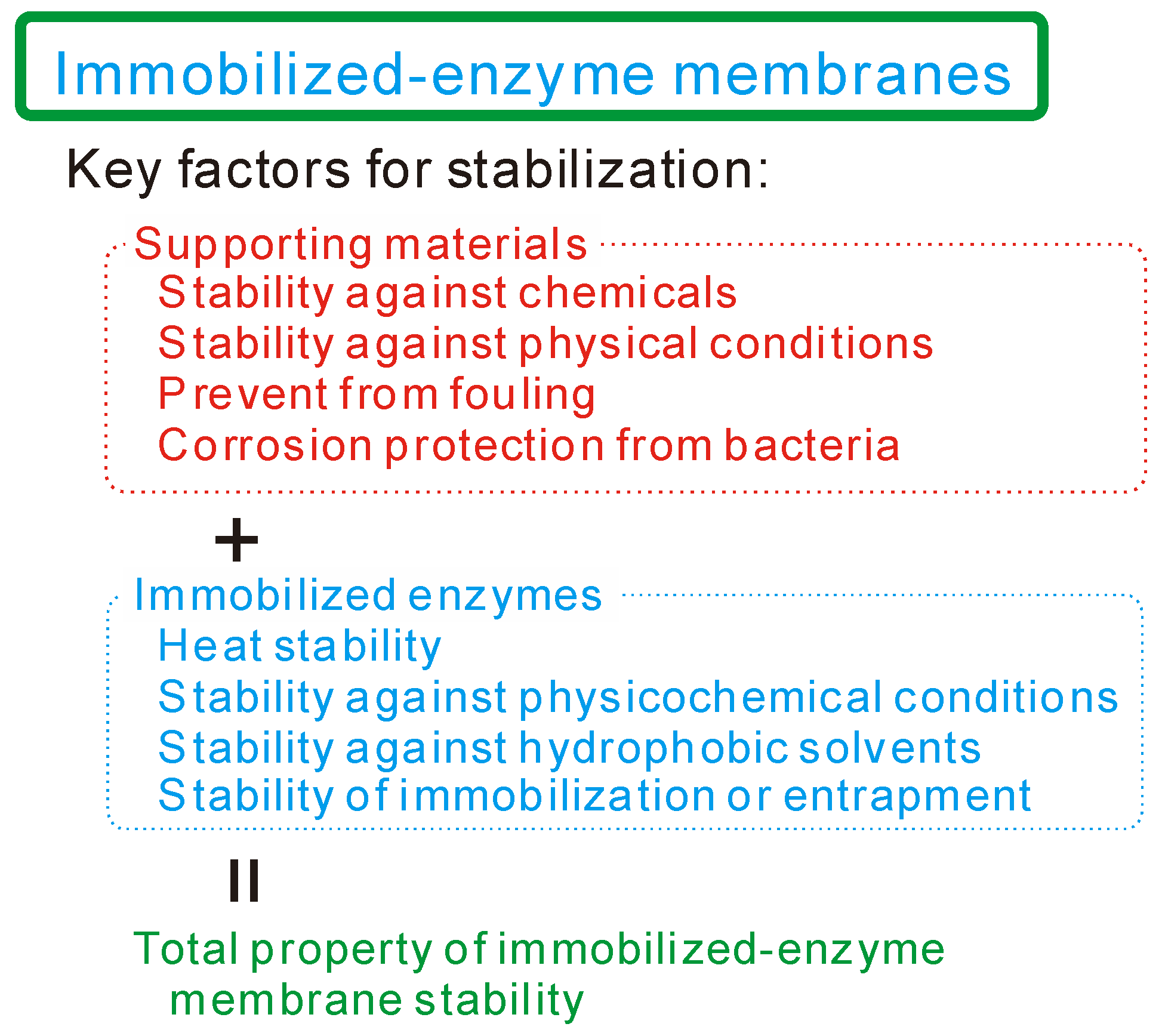
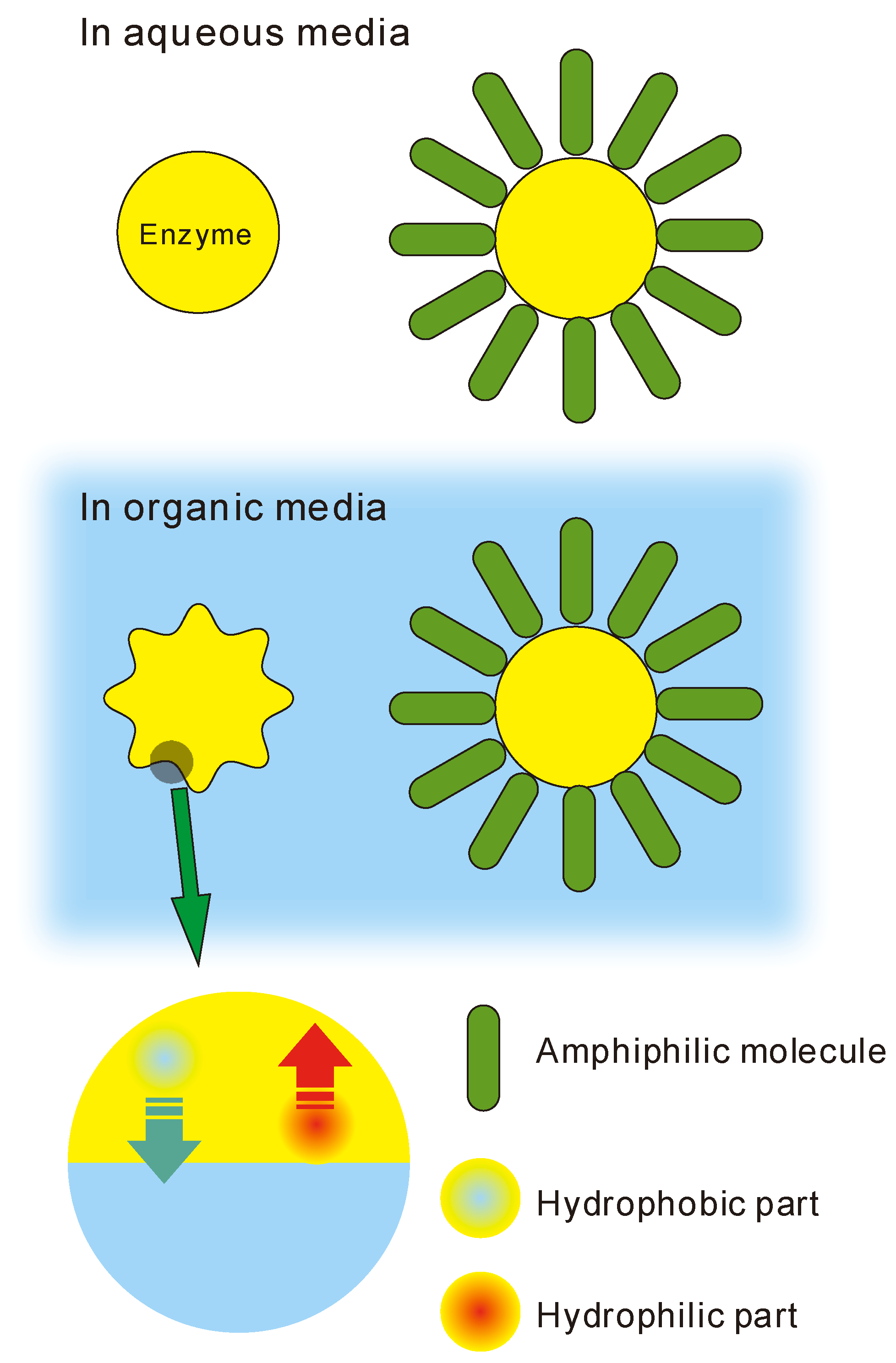

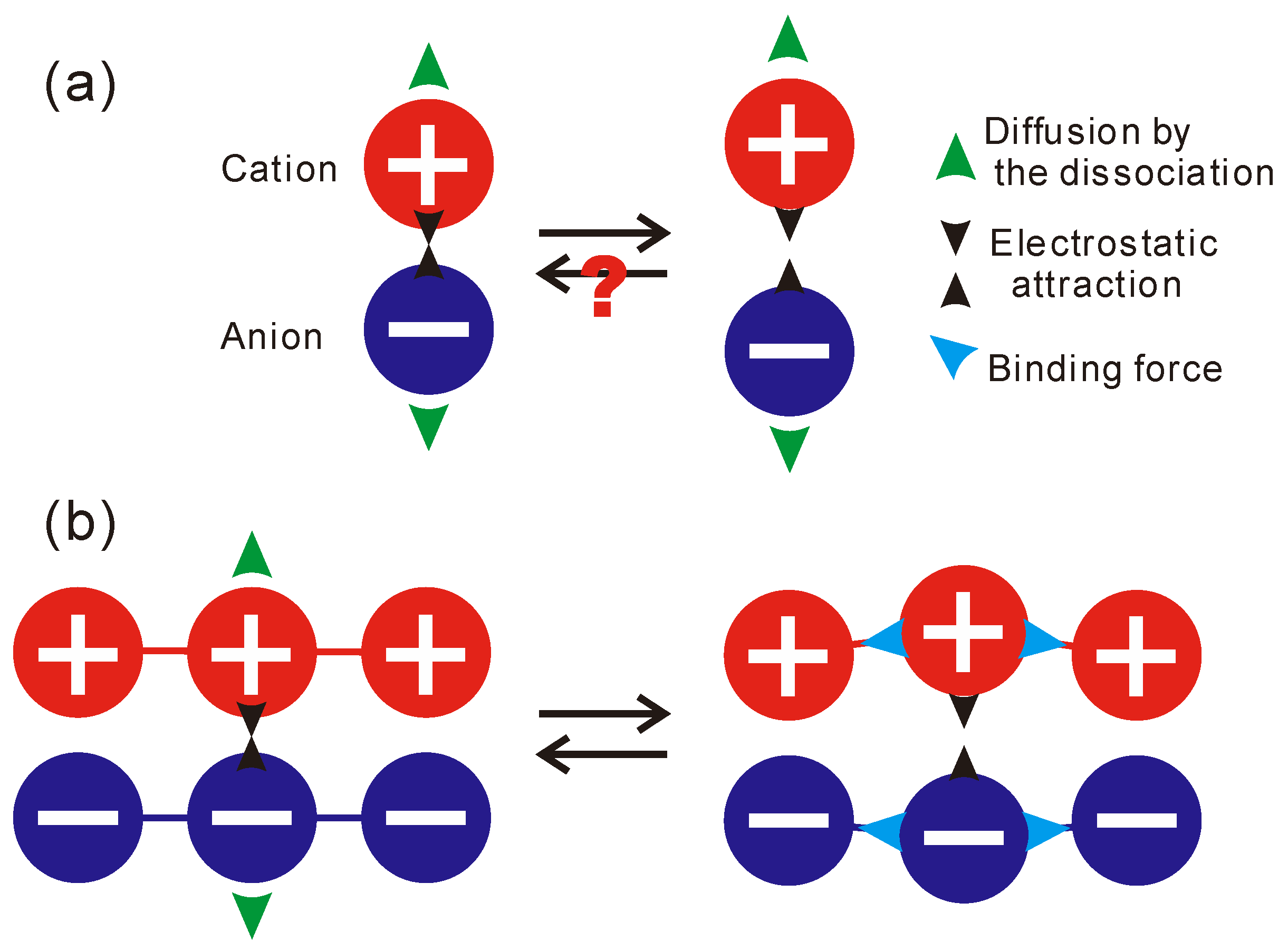
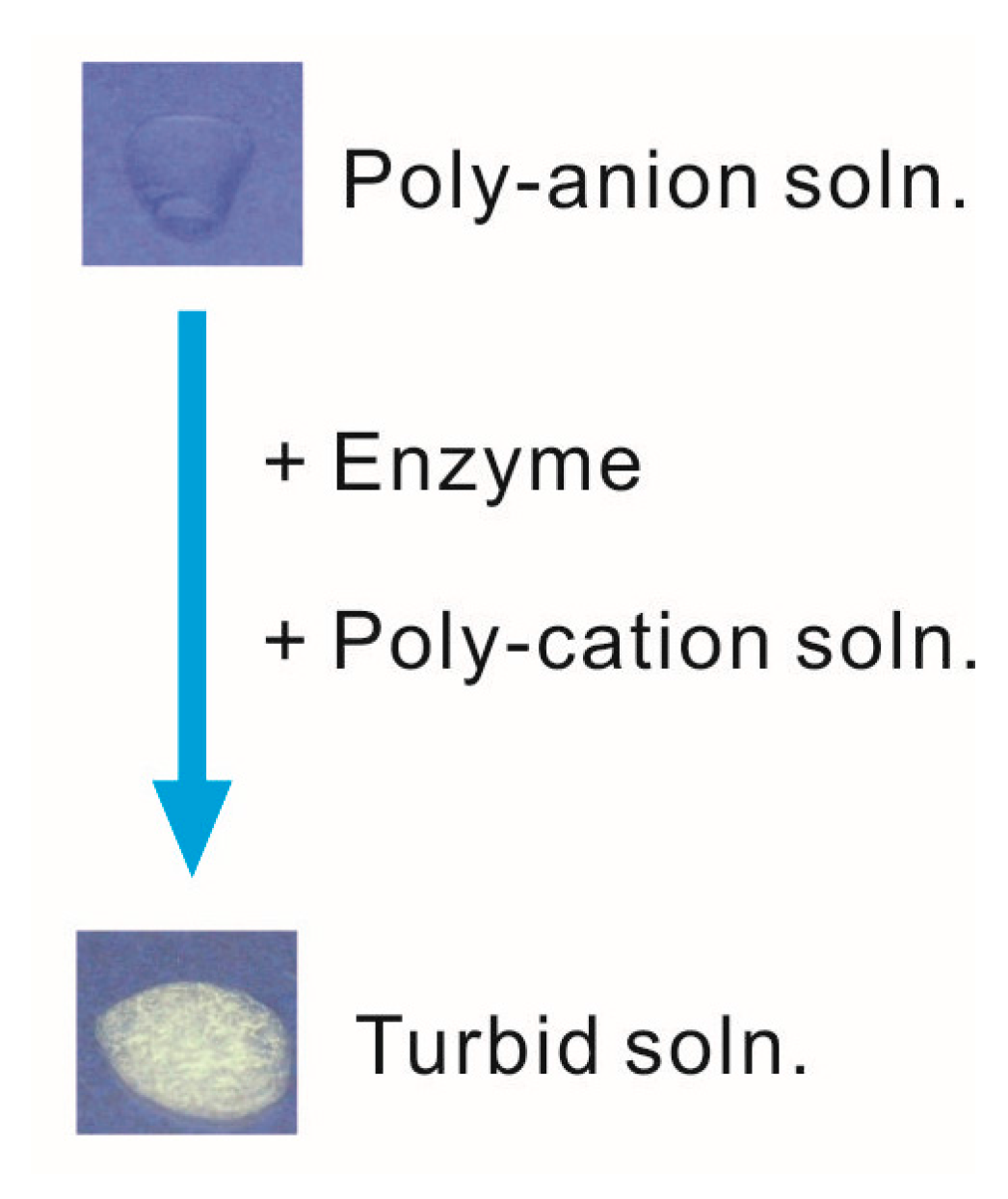
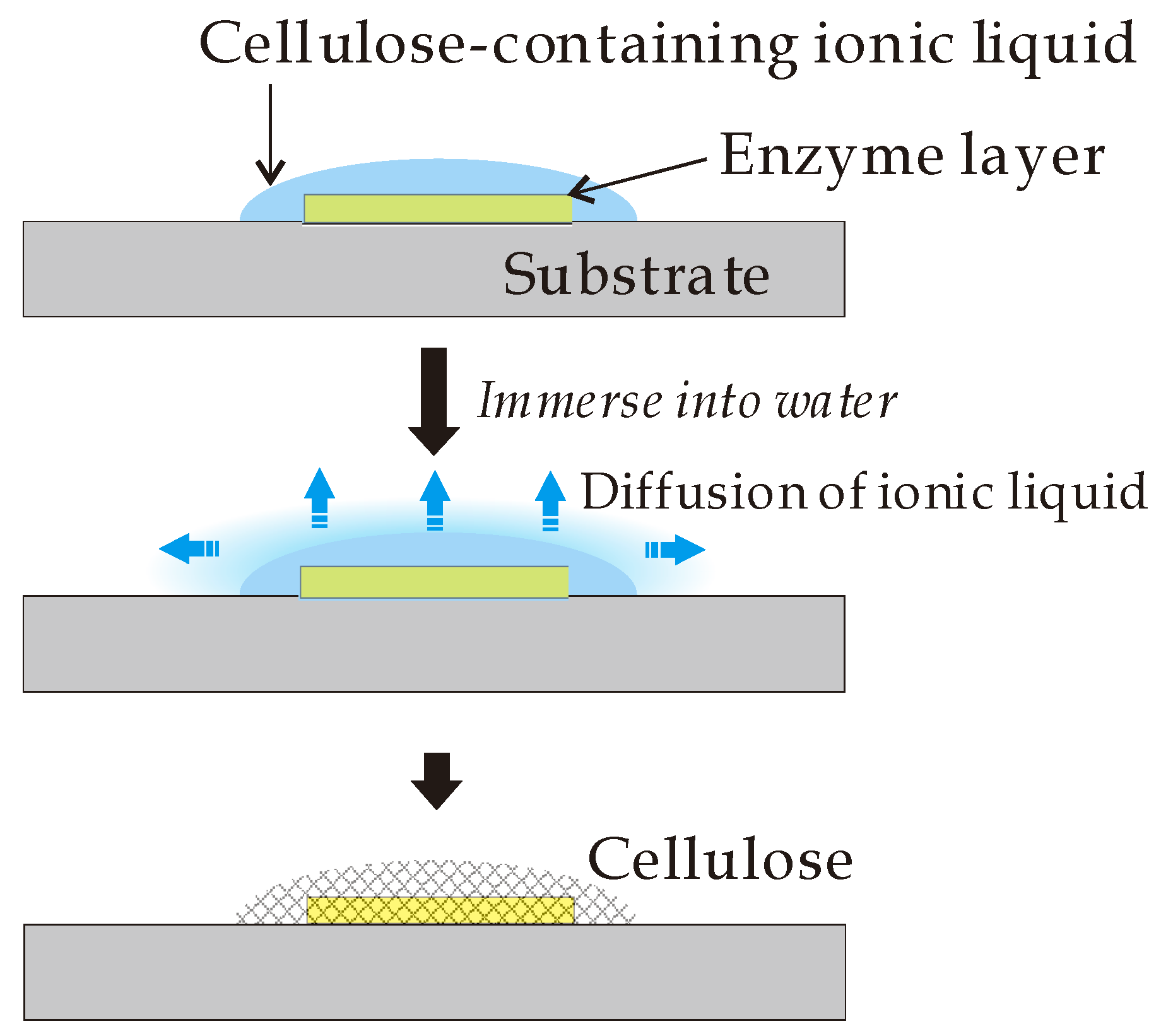
© 2017 by the author. Licensee MDPI, Basel, Switzerland. This article is an open access article distributed under the terms and conditions of the Creative Commons Attribution (CC BY) license ( http://creativecommons.org/licenses/by/4.0/).
Share and Cite
Yabuki, S. How to Lengthen the Long-Term Stability of Enzyme Membranes: Trends and Strategies. Catalysts 2017, 7, 36. https://doi.org/10.3390/catal7020036
Yabuki S. How to Lengthen the Long-Term Stability of Enzyme Membranes: Trends and Strategies. Catalysts. 2017; 7(2):36. https://doi.org/10.3390/catal7020036
Chicago/Turabian StyleYabuki, Soichi. 2017. "How to Lengthen the Long-Term Stability of Enzyme Membranes: Trends and Strategies" Catalysts 7, no. 2: 36. https://doi.org/10.3390/catal7020036
APA StyleYabuki, S. (2017). How to Lengthen the Long-Term Stability of Enzyme Membranes: Trends and Strategies. Catalysts, 7(2), 36. https://doi.org/10.3390/catal7020036




